The Pros and Cons of Mobile Collision Repair Services
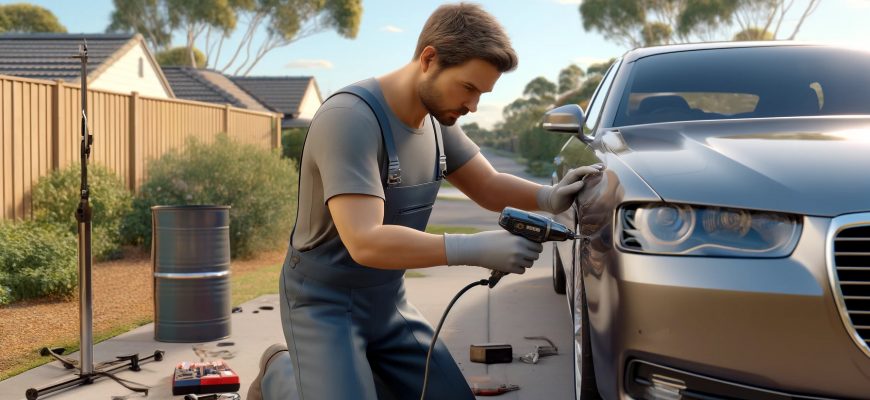
The Pros and Cons of Mobile Collision Repair Services
In an era where convenience is king, mobile collision repair services have emerged as a game-changer for car owners across Australia. Offering repairs from the comfort of your home or office, these services bring the body shop to you, providing a hassle-free solution to car damage. This article explores the advantages and disadvantages of mobile collision repair services, providing Australian drivers with the information they need to make informed decisions.
What are Mobile Collision Repair Services?
Mobile collision repair services are an innovative approach to vehicle maintenance, where the repair professionals come to your location to fix damages directly. This service model typically includes repairs such as dent removal, scratch and paint touch-ups, bumper repairs, and more. Unlike traditional garages, where you might leave your car for days, mobile repairs are designed to offer a quicker, more convenient solution.
Pros of Mobile Collision Repair Services
Convenience
The primary advantage of mobile collision repair services is convenience. For Australians living in both densely populated cities and more remote areas, the ability to have repair work done at home or at work can save significant time. This is particularly beneficial in Australia, where distances can be vast and access to traditional body shops may be limited.
Flexibility
Mobile services often operate with extended hours and can accommodate your schedule, whether it’s during your work hours, early mornings, or late evenings. This flexibility is ideal for those who cannot afford to take time off work or have other commitments that make visiting a traditional repair shop challenging.
Immediate Assistance
Another significant benefit is the promptness of service. Mobile repair units can often respond to your needs quickly, minimizing the time your vehicle is out of commission. This is especially critical if the vehicle is essential for your daily activities or work.
Cons of Mobile Collision Repair Services
Limited Services
While mobile repairs are convenient, they do have their limitations. Complex body damages that require high-end equipment or a controlled environment are often beyond the scope of what mobile services can handle. In such cases, a traditional body shop is necessary to properly address extensive damages.
Dependence on Weather Conditions
The effectiveness of mobile repairs can be heavily dependent on weather conditions. Painting and some forms of bodywork require dry conditions, and sudden changes in weather can affect the quality of the repair. This is a considerable disadvantage in regions of Australia prone to unpredictable weather.
Potential for Higher Costs
Mobile services might also come with a higher price tag. The convenience of having a service come to you can sometimes reflect in the cost, particularly for urgent repairs or in remote locations where travel time and logistics add to the service charge.
Considerations for Choosing Mobile Collision Repair Services
Choosing between a mobile repair service and a traditional body shop should depend on several factors. Consider the extent of the damage, the type of repair needed, and your geographical location. For minor repairs and regular maintenance, mobile services offer a superb alternative to the hassle of a body shop. However, for more severe damage or high-quality finish requirements, a specialised facility might be better equipped to handle your needs.
Mobile collision repair services offer a blend of convenience and efficiency, making them an attractive option for many car owners in Australia. However, understanding their limitations is crucial in deciding if they are the right choice for your situation. By considering the pros and cons outlined above, you can make an informed decision that best suits your needs and keeps your car in top condition.
Read More
- How Do You Fix Factory Paint on a Car? An In-Depth Look at Paintless Dent Removal – This post explores techniques like paintless dent removal, which is often a service offered by mobile repair services.
- Overcoming the Challenges of Vintage Car Collision Repairs – This article discusses the unique challenges associated with repairing vintage cars, which can sometimes be addressed by mobile repair services that offer specialized onsite solutions.
- Navigating the World of Aftermarket Parts in Collision Repair – The use of aftermarket parts is common in both traditional and mobile collision repairs. This post discusses how to navigate these options effectively.
- Enhancing Your Car’s Longevity with Quality Collision Repairs: A Guide for Australians – This post highlights the importance of quality repairs in extending the life of a vehicle, pertinent to choosing between mobile and traditional repair services.
You can read these posts in detail on our News & Media page.
The Importance of a Clean Car
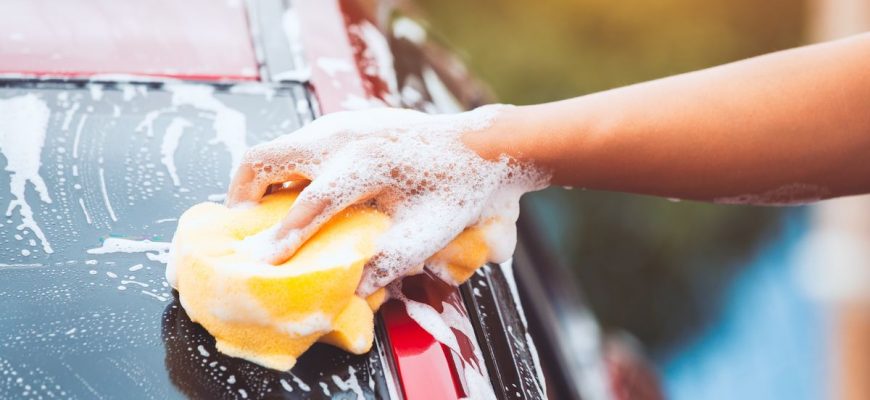
The Importance of a Clean Car: Essential Post-Repair Care Tips for Australians
A gleaming car isn’t just about aesthetics; it’s a testament to a well-maintained vehicle, especially after undergoing repairs. For many Australians, their car is not just a mode of transport but a reflection of their personal or professional image. Following repairs, how you clean and maintain your car can significantly impact its appearance, longevity, and even its value. This guide will delve into why it’s crucial to keep your car spotlessly clean after repairs and how best to achieve that pristine condition.
The Benefits of Keeping Your Car Clean Post-Repair
Visual Appeal: First impressions matter, and a clean car makes a positive statement. After repairs, ensuring your vehicle remains spotless helps maintain the quality and aesthetics of the work done. Whether it’s a fresh paint job or a fixed dent, a clean car highlights the craftsmanship of your repair specialist.
Prevention of Damage: Dirt and grime aren’t just unsightly; they are your car’s silent enemies. Left uncleaned, these elements can etch into new paint, degrade sealants, and even introduce rust in repaired areas. Regular washing prevents these potential damages, preserving the integrity of the repair work.
Resale Value: Cars are investments, and resale value is crucial. A well-kept car, starting with cleanliness, can significantly enhance its market value. Consistent care post-repair not only maintains but can increase your vehicle’s resale price, making cleanliness a financially savvy practice.
How to Clean Your Car After Repairs
Immediate Care Post-Repair: When your car has just come out of the shop, it’s vulnerable. Start with a gentle hand wash using a pH-neutral soap to remove any particulates from sanding or painting that could scratch the surface. Avoid high-pressure hoses and rough brushes; instead, opt for soft microfiber towels and sponges.
Choosing the Right Cleaning Products: Not all cleaning products are suitable for a freshly repaired car. Look for high-quality, gentle cleaners that are designed for automotive use. Dynamic Paint N Panel recommend CAR GODS products – available in-store at 17 Magill Road Stepney.
DIY Cleaning Tips: Focus on a thorough but gentle wash. Begin with the roof and work your way down, rinsing thoroughly as you go to prevent soap from drying on the surface. Pay special attention to newly repaired areas — ensure they are cleaned with extra care to avoid introducing scratches.
Professional Cleaning Services: Sometimes, the best care comes from professionals. For comprehensive cleaning and maintenance, especially after significant bodywork, consider services like professional car cleaners and detailers. These professionals can provide deep cleaning and apply ceramic coatings that protect the repair for the long haul.
Special Considerations for Different Types of Repairs
Paint Jobs: New paint is susceptible to scratches and contaminants. After a repaint, ensure the car is washed in a shade, using soft wipers and mild cleaners. Allow the paint to cure fully—usually about two to four weeks—before applying any wax or sealant.
Interior Repairs: If the repairs involve the interior, such as upholstery or carpets, use vacuum cleaners and fabric cleaners designed for automotive interiors. These products help maintain the freshness of the repair without overpowering chemical smells or leaving residues.
Ongoing Maintenance and Protection
Regular Cleaning Schedule: Set a regular cleaning routine that suits your environment and usage. Cars in urban or coastal areas might need more frequent cleaning due to pollution and salt spray.
Protective Coatings: Applying a wax or ceramic coating can greatly enhance your car’s resistance to the elements. These products form a protective barrier over the paint, chrome, and even plastic parts, which helps keep the car clean and protected from UV rays, bird droppings, and tree sap.
Maintaining a clean car after repairs is not just about aesthetics; it’s about safeguarding your investment. By following these detailed care tips, you can ensure that your vehicle remains in pristine condition, reflecting both your personal pride and care. Embrace the habit of regular maintenance, and your car will continue to look as good as new, driving smoothly and retaining its value for years to come.
References
For further reading and to purchase the recommended products, see the articles below. Remember, a little care goes a long way in keeping your car in top-notch condition post-repair.
- How Do You Fix Factory Paint on a Car? An In-Depth Look at Paintless Dent Removal – This post explores techniques for repairing factory paint without needing a full repaint, a useful consideration after minor body work.
- Overcoming the Challenges of Vintage Car Collision Repairs – This article discusses specific considerations and care tips for vintage cars after collision repairs, which could be quite relevant for maintaining a clean and pristine appearance post-repair.
- Navigating the World of Aftermarket Parts in Collision Repair – Useful for understanding how aftermarket parts can affect the overall look and durability of car repairs.
- The Connection Between Driver Safety and Vehicle Maintenance – It highlights the importance of maintaining a vehicle not just for aesthetics but also for safety, tying in well with the theme of ongoing maintenance post-repair.
- Enhancing Your Car’s Longevity with Quality Collision Repairs: A Guide for Australians – This guide provides insights into how quality repairs and subsequent care can extend the life and performance of your vehicle.
How to Fix Mismatched Paint on Your Car
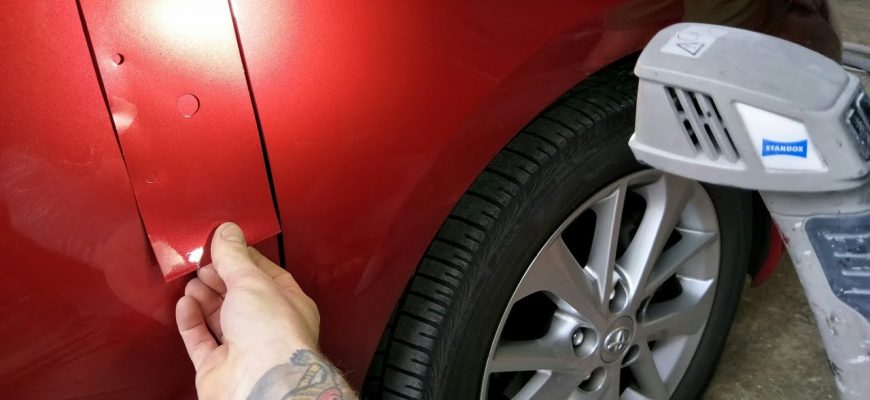
How to Fix Mismatched Paint on Your Car
Nothing detracts from the sleek look of a car quite like mismatched paint. Whether it’s due to the harsh Australian sun, an accident, or a previous repair job gone wrong, mismatched paint can be an eyesore and diminish the value of your vehicle. Fortunately, with the right tools and techniques, you can restore your car’s paint job to its former glory. This guide will walk you through the steps to fix mismatched paint on your car, ensuring your ride looks as good as new.
Understanding the Causes of Mismatched Paint
Mismatched paint can result from several factors, each affecting how you might approach the repair:
- Sun Exposure: Australia’s intense sunlight can fade car paint unevenly, particularly if your car is often parked outdoors. UV rays can degrade the paint over time, leading to noticeable differences in colour.
- Accidental Damage: Scratches, dents, and parts replacements can lead to sections of new or touched-up paint that doesn’t match the rest.
- Improper Repairs: Using different brands or batches of paint without proper colour matching can result in a noticeable lack of uniformity.
Recognising the root cause of the mismatch is your first step towards a successful repair.
Preparing to Fix Mismatched Paint
Before you start the repair, gathering the right materials and preparing the area is crucial. Here’s what you’ll need:
- Materials: Automotive primer, colour-matched automotive paint, clear coat, sandpaper (ranging from 400 to 2000 grit), masking tape, and a dust mask.
- Cleaning the Area: Wash the affected area thoroughly with soap and water to remove any dirt or grime. Follow up with a wax and grease remover to ensure that no contaminants interfere with your paint job.
- Safety First: Always work in a well-ventilated area and wear protective gear like gloves and a respirator mask to safeguard against fumes and dust.
Step-by-Step Guide to Fixing Mismatched Paint
Repairing mismatched paint involves several detailed steps. Here’s how to proceed:
Step 1: Cleaning and Sanding
Begin by sanding the mismatched area with 400-grit sandpaper to remove the glossy finish and create a surface that the new paint can adhere to. Be sure to feather the edges where the old and new paint will meet to help blend the colours seamlessly.
Step 2: Priming
Apply a thin coat of automotive primer to the sanded area. Allow it to dry according to the manufacturer’s instructions, then lightly sand with 600-grit sandpaper. This helps the new paint adhere better and contributes to a smoother appearance.
Step 3: Matching the Paint
Achieving the perfect colour match is perhaps the most critical step. Utilize a reputable automotive paint supplier who can offer custom colour mixing services. Provide them with your car’s VIN to ensure the colour accuracy.
Step 4: Painting
After thoroughly mixing the paint, apply several thin coats, allowing each to dry as specified by the paint manufacturer. Use even strokes and maintain a consistent distance from the car to avoid drips and splotches.
Step 5: Applying Clear Coat
Once the paint is dry, apply a clear coat to protect the new paint and enhance the shine. Like with painting, apply the clear coat in thin, even layers.
Step 6: Polishing
After the clear coat has dried, use 2000-grit sandpaper to wet sand any bumps or imperfections. Finish by polishing the area with a buffing compound to achieve a smooth, glossy finish that matches the rest of your car.
Professional vs. DIY: What’s Best for Your Car?
While many car enthusiasts may opt for a DIY approach, consider the extent of the mismatch and your skill level. For extensive mismatches or high-end vehicles, consulting with a professional might be the best course. Professional painters have access to advanced tools and technologies, such as computerized colour-matching systems, that ensure a perfect match and high-quality finish.
Maintenance Tips to Avoid Future Paint Mismatch
Prevent future paint issues with regular maintenance:
- Regular Washing: Clean your car regularly to remove pollutants that may cause paint to fade.
- Waxing: Apply a quality wax every few months to protect the paint from UV rays and contaminants.
- Covered Parking: Whenever possible, park your car in shaded or covered areas to minimize exposure to sunlight.
Fixing mismatched paint on your car can be a satisfying project that restores its appearance and value. Whether you choose to tackle the job yourself or go professional, understanding the proper techniques and care involved will ensure your car looks its best. Remember, the key to a successful paint job lies in meticulous preparation and attention to detail. Happy painting!
This detailed guide provides general information to help you decide how best to fix mismatched paint on your car.
Other Great Information
- Overcoming the Challenges of Vintage Car Collision Repairs – This post might include insights on dealing with colour matching in older models where original paint might not be readily available.
- Navigating the World of Aftermarket Parts in Collision Repair – Discusses the use of aftermarket parts in repairs, which could affect paint matching and overall aesthetics.
- Enhancing Your Car’s Longevity with Quality Collision Repairs: A Guide for Australians – Provides comprehensive details on maintaining your car’s appearance through quality repairs, likely including painting tips.
- The Dos and Don’ts After a Collision: A Guide for Adelaide Drivers – Offers practical advice post-collision, which may include steps to ensure paint work is properly matched during repairs.
How Do You Fix Factory Paint on a Car? An In-Depth Look at Paintless Dent Removal
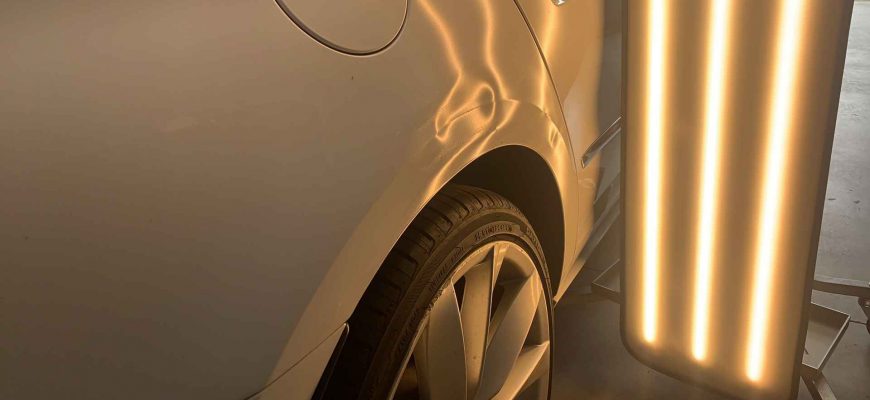
How Do You Fix Factory Paint on a Car? An In-Depth Look at Paintless Dent Removal
Maintaining the pristine condition of your car’s factory paint not only keeps your vehicle looking new but also protects its structural integrity. Over time, external elements and everyday use can lead to various paint damage such as dents, scratches, and fading. Repairing these imperfections is crucial to preserving the vehicle’s aesthetic and resale value. This article offers a comprehensive guide on fixing factory paint, with a focus on Paintless Dent Removal (PDR), a revolutionary technique offered by specialists like Dynamic Paint N Panel in Australia.
Understanding Factory Paint and Common Damages
Factory paint refers to the original coat of paint applied to a vehicle during its manufacturing process. This paint is not just about aesthetics; it forms a protective barrier against rust and environmental damage. In Australia, cars are frequently exposed to harsh sunlight and coastal air, which can accelerate paint deterioration. Common paint issues include:
- Scratches: Caused by brushing against sharp objects or improper cleaning techniques.
- Dents: Often a result of minor collisions or hail damage.
- Chips: Small areas where paint has been removed due to stones or debris.
- Fading: Gradual loss of colour and shine primarily due to prolonged UV exposure.
Addressing these issues promptly can prevent further damage and help maintain the vehicle’s value.
Why Choose Paintless Dent Removal?
Paintless Dent Removal (PDR) is an innovative repair technique that smooths out dents without compromising the factory paint’s integrity. This method is highly beneficial over traditional repair techniques for several reasons:
- Cost-Effective: PDR eliminates the need for costly repainting and extensive labor.
- Time-Saving: Most PDR jobs can be completed in a few hours, unlike traditional methods that might take days.
- Preserves Original Paint: Maintaining the original paint is crucial for resale value and aesthetic appeal.
Dynamic Paint N Panel, a leader in PDR across Australia, employs skilled technicians who specialize in this precise art, ensuring high-quality results.
Paintless Dent Removal at Dynamic Paint N Panel
Dynamic Paint N Panel has established itself as a premier provider of PDR services, priding itself on restoring cars to their pre-damaged condition without a trace. The process at Dynamic Paint N Panel involves:
- Initial Assessment: Technicians evaluate the damage to determine if PDR is the best approach.
- Technique: Using specialized tools, the technician carefully “massages” the dented panel from the backside, pushing the dent out to restore the panel’s original shape.
- Finishing Touches: High-precision tools are used to make minor adjustments, ensuring the surface is perfectly smooth.
Dynamic Paint N Panel ensures that each vehicle is handled with the utmost care, offering a satisfaction guarantee on all repairs.
DIY vs. Professional Paint Repair
While DIY kits are available, repairing factory paint effectively usually requires professional skills and tools, especially for paintless dent removal. DIY attempts can often lead to further damage, including:
- Misjudging the repair: Overestimating one’s ability to fix complex dents can lead to worsening the damage.
- Inadequate tools: Professional-grade tools are specifically designed for PDR and may not be effectively replicated in a DIY setting.
Turning to professionals like Dynamic Paint N Panel can save both time and money in the long run. They ensure repairs are done right the first time, maintaining the vehicle’s aesthetic and resale value.
Conclusion
Keeping your car’s factory paint in excellent condition is crucial for both aesthetic and economic reasons. With technologies like Paintless Dent Removal offered by specialists such as Dynamic Paint N Panel, repairing common paint damages has never been more efficient or effective.
If your vehicle suffers from dents, scratches, or other paint imperfections, consider reaching out to Dynamic Paint N Panel for a consultation. Visit their website at dynamicpaintnpanel.com.au or call their office to learn more about their services and how they can help restore your car to its former glory. Don’t forget to inquire about any promotions or discounts for new customers!
Other Helpful Articles
Here are a few relevant posts from the Dynamic Paint N Panel website that relate to the topic of your article on fixing factory paint and using Paintless Dent Removal:
- Enhancing Your Car’s Longevity with Quality Collision Repairs: A Guide for Australians – This post discusses how quality repairs can extend the life of your vehicle, emphasizing the importance of professional services.
- The Dos and Don’ts After a Collision: A Guide for Adelaide Drivers – Offers practical advice for drivers in Adelaide on what steps to take immediately following a collision to ensure the best outcomes for car repairs.
- Tips for Eco-Friendly Car Care and Collision Repair – Provides insights on how to maintain your car and manage collision repairs in an environmentally friendly way.
- The Importance of Colour Matching in Auto Body Repair – This article explains why colour matching is crucial for maintaining the aesthetic appeal of your car after repairs, which ties in well with preserving factory paint quality.
- How to Protect Your Car’s Value with Professional Collision Repair – Highlights the benefits of professional repair services in preserving the resale value of your car, particularly after an accident.
Overcoming the Challenges of Vintage Car Collision Repairs
Overcoming the Challenges of Vintage Car Collision Repairs
Vintage cars hold a special place in the hearts of their owners. These vehicles are not just modes of transportation; they are treasured pieces of history. However, when accidents occur, restoring these vehicles can be particularly challenging. This article delves into the specialised world of vintage car collision repairs, offering essential insights and advice for Australian vintage car owners.
Understanding Vintage Car Collision Repairs
Vintage car collision repairs go beyond simple dent fixing or repainting. These vehicles often require a delicate approach to preserve their historical accuracy and intrinsic value. Specialised workshops like TC Classics understand that vintage car repairs demand a higher level of care and precision. They emphasise that each repair must maintain the vehicle’s original specifications to ensure both its safety and its authenticity.
Challenges in Vintage Car Repairs
- Parts Availability: One of the primary obstacles in repairing vintage cars is sourcing the right parts. Unlike modern vehicles, vintage cars often need parts that are no longer in production. Workshops like Capital Steering & Suspension have adapted by remanufacturing parts or sourcing them through extensive networks of suppliers and collectors.
- Specialised Skills: The techniques used in vintage car repairs are often different from those applied to modern vehicles. It requires craftsmen who are skilled in older techniques such as lead loading and hand-shaping metal. Businesses like Hobart Smash Repairs and Platinum Classic Restorations provide teams with decades of experience, ensuring that every repair respects the vehicle’s era.
- Technological Adaptations: Even though vintage cars need old-fashioned craftsmanship, modern technology plays a crucial role in ensuring the repairs meet current safety standards. Advanced measuring and alignment tools are used to ensure that everything from the frame to the suspension is perfectly aligned. TC Classics, for example, employs state-of-the-art technologies to ensure their repairs are both accurate and safe, bridging the gap between old-world charm and modern-day precision.
Best Practices for Vintage Car Collision Repairs
Choosing the right repair shop is crucial. It’s important to select facilities that specialise in vintage vehicles. These establishments, like Platinum Classic Restorations, not only have the necessary expertise but also the passion for returning vintage cars to their former glory.
Custom solutions are equally important. Facilities that offer custom part fabrication and specialised machining, like Vintage and Classic Automotive, are invaluable. They have the capability to produce even the most elusive parts, ensuring that every aspect of the repair is authentic and up to standard (Vintage and Classic Auto).
Regular maintenance and inspections can prevent many issues from escalating into major repairs. A regular check-up can identify potential problems before they result in damage, ensuring that the vehicle remains in optimal condition. This proactive approach is advocated by experts like those at Vintage and Classic Automotive, who offer comprehensive maintenance services tailored for vintage vehicles (Vintage and Classic Auto).
The restoration of a vintage car following a collision is a meticulous and complex process that blends traditional craftsmanship with modern technology. For owners of these classic beauties, choosing the right repair service is pivotal. By selecting specialists who understand the nuances of vintage vehicles and can offer custom solutions, car owners can rest assured that their cherished possessions are in capable hands. The journey to restore a vintage car might be challenging, but with the right expertise, it can be a rewarding experience that brings a piece of automotive history back to life.
Here are some posts from the Dynamic Paint N Panel website that are relevant to vintage car collision repairs:
- Enhancing Your Car’s Longevity with Quality Collision Repairs: A Guide for Australians – This post discusses how quality collision repairs can extend the life of your vehicle, which is crucial for maintaining vintage cars.
- The Dos and Don’ts After a Collision: A Guide for Adelaide Drivers – This article offers practical advice for drivers on what to do immediately following a collision, useful for vintage car owners.
- Tips for Eco-Friendly Car Care and Collision Repair – While focused on eco-friendly practices, this post also touches on care techniques that could benefit the preservation of vintage cars.
- The Importance of Colour Matching in Auto Body Repair – Essential for restoring vintage cars, this post explains why precise colour matching is critical in collision repairs to ensure the vehicle retains its original appearance.
- How to Protect Your Car’s Value with Professional Collision Repair – This article highlights the importance of professional repairs to maintain the value of a vehicle, especially pertinent for vintage car owners.
Navigating the World of Aftermarket Parts in Collision Repair
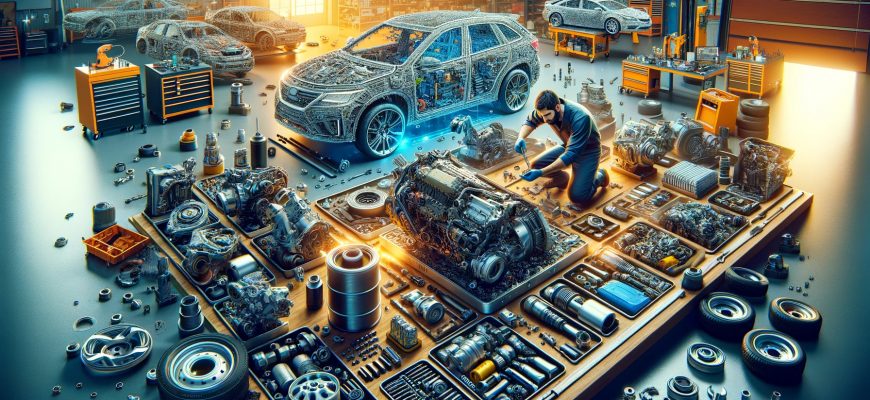
Navigating the World of Aftermarket Parts in Collision Repair
When a vehicle undergoes collision repair in Australia, one of the pivotal decisions involves the choice between Original Equipment Manufacturer (OEM) parts and aftermarket parts. Understanding the nuances of aftermarket parts is essential not only for automotive professionals but also for car owners who seek to make informed decisions about their vehicle repairs.
Understanding Aftermarket Parts
Aftermarket parts are replacement components that are not sourced from the vehicle’s original manufacturer. These parts are usually produced by third-party companies and are designed to function the same as, or similar to, OEM parts. They are prevalent in the Australian automotive repair market due to their cost-effectiveness and availability. However, the quality and performance of these parts can vary significantly, which is a crucial consideration for both safety and vehicle integrity.
Benefits and Drawbacks of Aftermarket Parts
The primary advantage of aftermarket parts is cost-effectiveness. They are generally less expensive than OEM parts, often making them a go-to choice for insurance companies and car owners looking to save on repair costs. Furthermore, aftermarket parts can reduce the total time a car spends in the shop because they are more readily available than OEM parts, which sometimes need to be ordered directly from the manufacturer.
However, the drawbacks of aftermarket parts are notable. There can be significant variability in the quality and fit of these parts, which can affect the vehicle’s safety and functionality. For instance, the Insurance Institute for Highway Safety has shown that while some aftermarket parts perform comparably to OEM parts, others may not meet these standards, potentially compromising vehicle safety.
Regulatory and Industry Standards
In Australia, the use of aftermarket parts in collision repairs is subject to specific regulations that ensure safety and performance standards are met. The Australian Automotive Aftermarket Association (AAAA) provides guidance and advocacy for standards in the automotive repair industry, ensuring that aftermarket parts are reliable and safe to use (AAAA).
Furthermore, certifications such as those from the Certified Automotive Parts Association (CAPA) play a crucial role in bolstering consumer confidence. CAPA-certified parts have undergone rigorous testing to meet industry standards for fit, form, and function, and are considered a safe choice comparable to OEM parts.
Choosing the Right Parts: A Guide for Repair Shops
For repair shops, making the right choice between OEM and aftermarket parts involves several considerations:
- Quality Assurance: It’s crucial to source aftermarket parts from reputable suppliers who offer guarantees on their parts. This ensures that the parts are reliable and will not adversely affect the vehicle’s performance.
- Certifications: Opting for parts that are CAPA certified or have other reputable endorsements can help ensure that aftermarket parts will perform well and meet safety standards.
- Technology and Information Access: Utilizing up-to-date digital platforms and databases like the SUN Collision Repair Information system can help shops access the latest OEM information and repair procedures, ensuring repairs are done correctly.
Conclusion
Choosing between OEM and aftermarket parts involves balancing cost, quality, and safety. While aftermarket parts offer a cost-effective solution, it is vital to ensure they do not compromise on quality or safety. By staying informed and adhering to industry standards, both repair shops and vehicle owners can make decisions that ensure the safety and longevity of their vehicles.
Navigating the world of aftermarket parts in collision repair requires knowledge and vigilance to ensure that every vehicle is restored to its pre-accident condition, safeguarding the performance and safety of the vehicle for its users.
READ MORE:
- Enhancing Your Car’s Longevity with Quality Collision Repairs: A Guide for Australians – This post discusses how quality collision repairs can extend the lifespan of a vehicle, emphasizing the importance of choosing the right parts and repair practices.
- The Dos and Don’ts After a Collision: A Guide for Adelaide Drivers – Provides guidance on what drivers should and shouldn’t do following a collision, including how to choose repair services and parts.
- Tips for Eco-Friendly Car Care and Collision Repair – Offers advice on maintaining your car and handling collision repairs in an environmentally friendly way, potentially touching on the types of parts used.
- The Importance of Colour Matching in Auto Body Repair – Focuses on the aesthetic aspects of collision repair, which is crucial when using aftermarket parts to ensure they match the original vehicle’s appearance.
- How to Protect Your Car’s Value with Professional Collision Repair – Discusses how professional repairs using the right parts can maintain or enhance the resale value of a car.
The Connection Between Driver Safety and Vehicle Maintenance
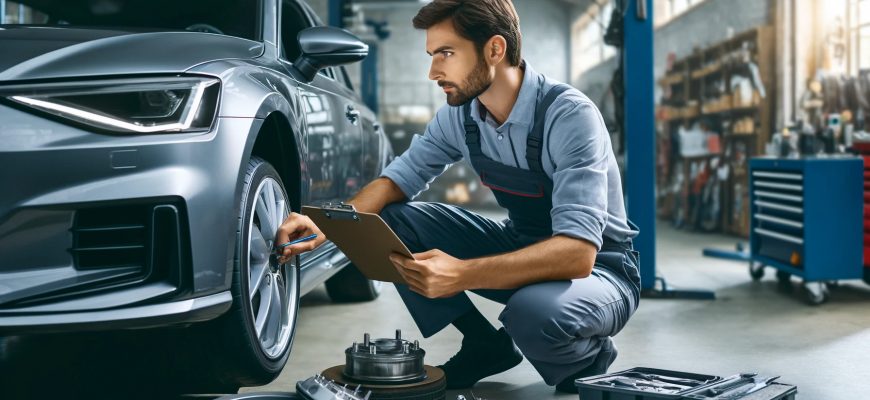
The Connection Between Driver Safety and Vehicle Maintenance
As drivers, we often consider vehicle maintenance as merely another line on our budget, but the truth is, the state of your car plays a critical role in your safety on the road. In Australia, where varied terrain and weather conditions can challenge the best of drivers, the importance of vehicle maintenance cannot be overstated. This article explores the vital connection between regular vehicle upkeep and driver safety, underscoring why maintaining your car is not just about vehicle longevity, but ensuring every journey is as safe as possible.
The Importance of Vehicle Maintenance in Ensuring Safety
Recent statistics from road safety agencies in Australia reveal a startling correlation between vehicle faults and accident rates. For instance, faulty brakes and worn tyres are frequently cited in collision reports. Preventative maintenance is not just a recommendation; it’s a crucial component of driver safety. It ensures that vehicles are in optimal condition to respond to driver inputs and external conditions effectively. The Australian Transport Safety Bureau highlights that many road accidents could be prevented with proper vehicle care, pointing out that neglected maintenance can lead to catastrophic failures.
Brakes
Regular brake checks are vital. Worn brake pads or damaged discs can significantly increase stopping distances, putting you and others at risk. The National Roads & Motorists’ Association (NRMA) advises checking your brake pads during regular servicing and replacing them if thickness is below 1.5 mm.
Tyres
Tyres are your only contact with the road. Poorly maintained tyres, with insufficient tread or incorrect pressure, compromise handling and increase braking distances. The Department of Transport and Main Roads recommends regular checks to ensure your tyres comply with the legal tread depth of 1.5mm and are inflated according to manufacturer specifications.
Lights and Signals
Effective communication with other drivers depends heavily on properly functioning lights and signals. Regular checks to ensure that all lights are operational and bright enough are crucial, especially for driving under low visibility conditions in areas like Melbourne and Tasmania.
Windshield and Wipers
Clear visibility is crucial and often taken for granted until you’re caught in a sudden downpour with ineffective wipers. Ensuring that your windshield is crack-free and wipers are in good condition is essential, especially in regions prone to frequent rain and fog.
Tips for Regular Vehicle Maintenance
To keep your vehicle in safe working order, consider these tips:
- Regular Professional Check-ups: Schedule at least annual check-ups with a certified mechanic to catch potential issues before they become serious.
- Self-Inspections: Learn to perform basic inspections on your vehicle. Check your oil levels, tyre pressures, and lights regularly.
- Follow Manufacturer’s Guidelines: Always adhere to the manufacturer’s maintenance schedule as outlined in your vehicle’s manual.
Conclusion
Maintaining your vehicle is a fundamental aspect of safe driving. Regular checks and timely repairs not only extend the life of your car but crucially, they ensure that your vehicle remains safe in all driving conditions. Whether it’s a daily commute in Sydney or a cross-country trek through the Outback, the state of your vehicle plays a pivotal role in your safety. Remember, a well-maintained car is a safer car.
Other Sources
Check out these other articles from DPP
- The Importance of Colour Matching in Auto Body Repair – Discusses the importance of proper colour matching in repairs and how it impacts the overall safety and integrity of the vehicle.
- How to Protect Your Car’s Value with Professional Collision Repair – Focuses on the benefits of professional repair services post-collision to ensure safety standards are met.
- The Future of Collision Repair in Adelaide: Innovations to Watch – Looks into new technologies and methods in collision repair that enhance vehicle safety.
- Dealing with the Emotional Aftermath of a Car Accident – Offers insights into the psychological impact of car accidents and the importance of a safe, fully restored vehicle for peace of mind.
- The Benefits of Regular Vehicle Maintenance and Inspections: A Guide for Australian Drivers – Provides a comprehensive guide on how regular maintenance can prevent accidents and enhance driver safety.
Enhancing Your Car’s Longevity with Quality Collision Repairs: A Guide for Australians
Maintaining the longevity of your car is crucial, not just for its resale value but for your safety on the road. In the wake of an accident, the path to restoration involves more than just cosmetic fixes—it’s about ensuring your vehicle operates safely and efficiently, just like it did pre-collision. This article dives deep into how quality collision repairs can significantly enhance your car’s longevity, providing Australian car owners with essential insights and guidance.
Understanding Collision Repair in Australia
Collision repair goes beyond smoothing out a dent or repainting a scratch. It encompasses a wide range of services, from realigning the car’s frame to replacing any broken parts. In Australia, the standards for these repairs are stringent, ensuring that vehicles are not just visually appealing post-repair but are also safe to drive. Accredited and certified repair centres follow guidelines set by Australian Standards (AS) and the Motor Vehicle Insurance and Repair Industry Code of Conduct, offering peace of mind to car owners about the quality of repair work.
The Impact of Quality Repairs on Car Longevity
Quality collision repairs play a pivotal role in preserving the structural integrity of your car. Professional repair services ensure that every aspect of the vehicle, from its mechanical components to safety features like airbags, is restored to its original condition. This meticulous approach helps in averting potential future problems, such as rust on the bodywork or unseen damage that could compromise the car’s performance.
Conversely, subpar repairs can lead to a host of issues, including weakening the vehicle’s frame, making it more susceptible to damage in future collisions. Moreover, poorly repaired cars often suffer from reduced fuel efficiency and higher wear and tear, leading to more frequent and costly repairs down the line.
Choosing the Right Collision Repair Centre
Selecting the right repair centre is paramount. Here’s how you can ensure you’re choosing a reputable service:
- Look for Certifications: Accredited repairers, recognized by bodies such as the Victorian Automobile Chamber of Commerce (VACC) or the Motor Traders’ Association of NSW (MTA NSW), adhere to high standards.
- Check Reviews and References: Past customer experiences can offer valuable insights into the quality of repair work and customer service.
- Verify the Use of Genuine Parts: Genuine parts ensure your car remains as close to its original condition as possible, preserving its safety standards and value.
- Detailed Quote and Transparency: A reputable repairer will provide a comprehensive quote detailing the work to be done, ensuring transparency and no hidden costs.
Maintenance Tips Post-Repair
After your vehicle has been repaired, proper maintenance is crucial to ensure its longevity. Regular check-ups, especially in the first few months following the repair, can help catch any potential issues early. Monitoring the repaired areas for signs of wear or failure is essential. Additionally, maintaining a detailed record of the repair work can be invaluable, not only for your own reference but also for potential future buyers, thus enhancing the resale value of your car.
Quality collision repairs are not just about fixing the damage but are an investment in your car’s future. By choosing the right repair centre and following through with proper maintenance, you ensure that your vehicle remains safe, efficient, and reliable. Remember, in the aftermath of an accident, prioritize quality and professionalism to guarantee your car’s longevity. Your vehicle is more than just a means of transportation; it’s a companion on the road that deserves the best care after a collision.
In a world where cars are a significant part of our daily lives, taking the time and effort to ensure quality collision repairs can make all the difference. For car owners across Australia, this guide serves as a roadmap to navigating post-collision repairs, emphasizing the importance of quality, safety, and care in enhancing your car’s longevity.
- Dealing with the Emotional Aftermath of a Car Accident – This post discusses the psychological impact of car accidents and offers guidance on navigating emotional recovery, emphasizing the importance of professional help and self-care strategies.
- Worn tyres: Is Saving A Few Dollars Worth The Risk On The Road? – Highlighting the dangers of using part-worn tyres, this article underscores the significance of proper tyre maintenance and the potential safety risks associated with cost-cutting on such critical components.
- How to Ensure You’re Getting Genuine Parts – Focused on the importance of using genuine parts for vehicle repairs, this entry provides tips on how to verify part authenticity, stressing how genuine parts contribute to the safety, performance, and longevity of your vehicle.
- Top 5 Questions to Ask Your Collision Repair Technician – Offering advice on selecting a reputable collision repair technician, this post lists essential questions to ensure quality repairs, underlining the importance of certifications, detailed repair estimates, and understanding how repairs affect your car’s warranty.
- Getting Your Car Back To New – Faster Than You Ever Dreamed Possible! – This article showcases how Dynamic Paint N Panel prioritises top quality workmanship and customer care, illustrating their commitment to restoring vehicles to their prime condition and ensuring customer satisfaction and vehicle safety.
These articles offer a wealth of information relevant to maintaining and enhancing your car’s longevity through careful maintenance, the use of genuine parts, and the selection of qualified repair services.
The Dos and Don’ts After a Collision: A Guide for Adelaide Drivers
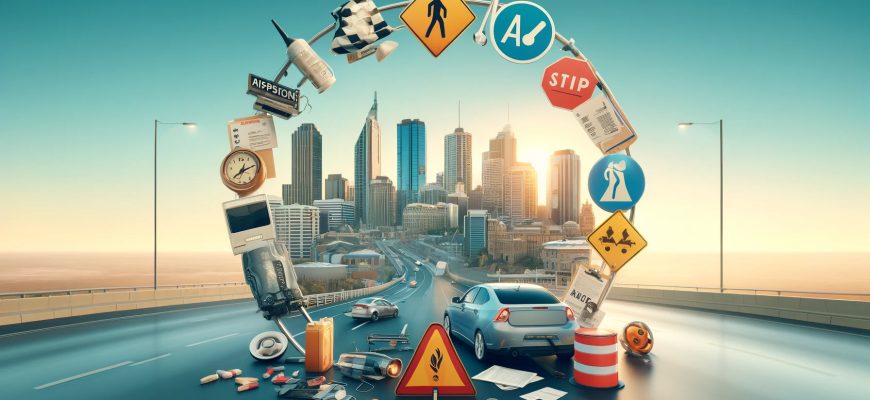
The Essential Guide to Navigating Post-Collision Steps for Adelaide Drivers
Accidents on the road can happen to anyone, anywhere, even in Adelaide’s relatively calm traffic. Whether it’s a minor fender bender or a more severe collision, knowing what to do in the immediate aftermath can significantly affect the resolution of any damages or injuries. This comprehensive guide offers detailed advice on the dos and don’ts following a vehicle collision, helping you navigate these challenging times with confidence.
Prioritising Safety and Immediate Steps
DO Seek Immediate Medical Attention
The first priority after any accident is the safety and well-being of all involved. Assess yourself and any passengers for injuries. Even if injuries seem minor or non-existent, shock can often mask pain. Call emergency services for a medical check-up if there’s the slightest concern .
DON’T Move Injured Parties
Unless there’s an immediate danger, such as fire, do not move anyone injured. Moving someone without proper technique could exacerbate potential injuries. Wait for emergency personnel to arrive.
DO Call the Police to the Scene
It’s crucial to have an official report, especially for insurance claims and legal matters. The police document the scene and provide an unbiased report of the event, which is invaluable later on.
Information Exchange and Documentation
DO Exchange Necessary Information
Swap names, addresses, phone numbers, and insurance details with the other driver. Stay factual and limit conversation about the accident to prevent any inadvertent admissions of guilt.
DO Document Everything
Take photos of the scene, including all vehicles involved, any visible damages, and road conditions. These photos can provide critical evidence for insurance claims and possible legal actions.
Post-Accident Actions
DO Report the Incident to Your Insurance
Notify your insurer about the accident as soon as possible. Be honest and detailed about the event, providing them with the police report and photographic evidence to support your claim.
DON’T Sign Anything Without Understanding It
Be wary of signing any documents, especially from the other party’s insurance company, without fully understanding the implications. When in doubt, seek legal advice.
Repair and Recovery
DO Choose a Reputable Repair Service
Select a trusted auto collision repair service for your vehicle. Quality repairs are crucial for the safety and longevity of your car post-accident.
DON’T Ignore Minor Damages
Even small damages can lead to bigger problems down the line. Ensure a thorough check and repair any damages, no matter how insignificant they may seem.
Long-term Considerations
DO Consider Legal Counsel
If you’re facing significant losses, injuries, or complications with insurance claims, consulting with a car accident lawyer can help protect your interests.
DON’T Rush Into Settlements
Take your time to understand the full extent of your damages and injuries before agreeing to any settlements. Rush decisions can lead to underselling your claim.
Conclusion
Navigating the aftermath of a car collision can be overwhelming, but being prepared can make a significant difference in the outcome. By following these detailed dos and don’ts, drivers in Adelaide and across Australia can ensure their safety, protect their rights, and facilitate the recovery and claims process. Remember, when in doubt, professional advice from legal and insurance professionals can provide the clarity and support needed to move forward effectively.
Stay Prepared, Stay Safe
In the unpredictable realm of road travel, being equipped with the knowledge of how to act post-collision is invaluable. This guide aims to prepare Adelaide drivers for any unforeseen events, ensuring that they can handle the situation with confidence and care.
On the Dynamic Paint N Panel website, under the “News & Media” section, I found several posts that are relevant to the topic of post-collision guidance and car maintenance:
- “The Importance of Colour Matching in Auto Body Repair” discusses the critical aspect of ensuring repaired areas on a vehicle match the original color precisely to maintain its aesthetic and value.
- “How to Protect Your Car’s Value with Professional Collision Repair” focuses on the importance of quality repairs after an accident to preserve the vehicle’s resale value.
- “The Future of Collision Repair in Adelaide: Innovations to Watch” explores upcoming technologies and methods in the collision repair industry that could enhance the repair process.
- “Dealing with the Emotional Aftermath of a Car Accident” offers insights into the psychological impact of car accidents and how individuals can cope with the stress and trauma.
- “The Benefits of Regular Vehicle Maintenance and Inspections: A Guide for Australian Drivers” emphasizes the importance of routine maintenance to ensure vehicle safety and efficiency.
These articles provide a mix of technical advice, industry insights, and personal well-being tips related to vehicle ownership and post-accident actions. For more detailed information on these topics, follow the links above.
The Importance of Colour Matching in Auto Body Repair
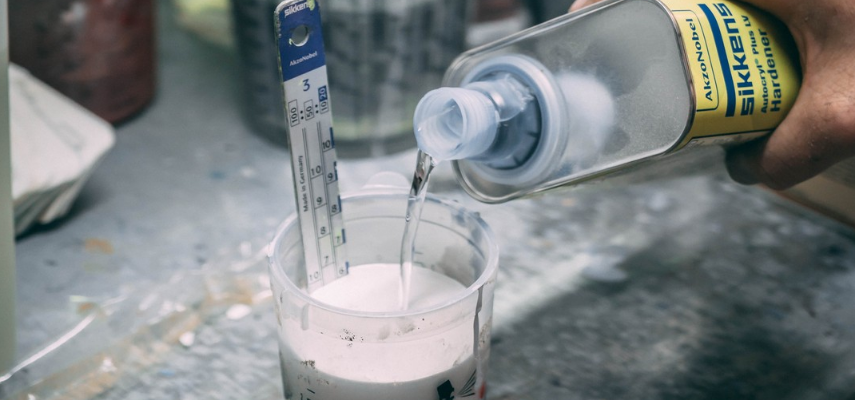
In the world of auto body repair, precision is everything. From the meticulous dismantling of damaged parts to the seamless application of the final clear coat, every step requires a keen eye and a steady hand. Among these critical steps, one that stands out for both its technical necessity and its aesthetic impact is colour matching. Particularly for Australian car owners, where the harsh sun can reveal even the slightest mismatch in hues, getting the colour just right is not just a matter of pride—it’s a testament to the quality of the repair work.
The Science of Colour Matching
At first glance, matching the colour of car paint might seem straightforward. However, the reality is far from simple. Automotive paint is not a single hue but a complex formula composed of base coats, and often, metallic or pearlescent finishes that add depth and character to the colour. Achieving the perfect match requires not just a good eye but also advanced technology. Today, spectrophotometers—a type of instrument that measures colour with incredible accuracy—are used in leading auto body shops. These devices analyze the colour of the car’s existing paint and provide a formula for mixing paint that matches precisely, taking into account how light and angle affect our perception of colour.
Why Colour Matching Is Essential in Auto Body Repair
The importance of colour matching extends beyond the surface. For one, the aesthetic appeal of a car is paramount; a mismatched paint job is immediately noticeable and detracts from the vehicle’s appearance. But the implications go deeper. A car’s resale value can be significantly impacted by the quality of its paint job. Accurate colour matching ensures that the vehicle maintains its value over time. Moreover, there’s a safety consideration; a uniform appearance without glaring colour differences makes previous damage less noticeable, which could be crucial for future inspections or sales. Finally, consumer trust hinges on the attention to detail that auto body shops demonstrate, with colour matching being a clear indicator of their dedication to excellence.
Challenges in Colour Matching
Despite advances in technology, colour matching in auto body repair faces several challenges. Different production runs of the same paint colour can have slight variations, making an exact match challenging. The aging process also affects vehicle paint, with factors like sunlight, chemicals, and wear altering the original hue over time. Furthermore, achieving a perfect match requires not just the right tools but also a significant level of skill and experience. Technicians must understand the intricacies of paint composition and application techniques, which can vary widely across different car models and brands.
Best Practices in Colour Matching for Auto Body Repair
Given these challenges, auto body repair professionals follow a set of best practices to ensure the best possible outcome. Preparation is key; the surface must be properly primed to ensure that the new paint adheres well and shows its true colour. Custom colour mixing, often done on-site, allows technicians to adjust the formula based on the specific shade and finish of the vehicle’s existing paint. Continuous learning and adaptation are also vital, as new paint formulations and application methods are constantly being developed. For car owners, choosing a repair service that invests in the latest technology and training in colour matching is crucial.
The significance of colour matching in auto body repair cannot be overstated. It is a complex process that demands precision, expertise, and the right technology. For Australian car owners, where the vibrant sun can amplify any discrepancies, ensuring a perfect match is essential. It affects not just the car’s aesthetic appeal but also its value and the trust that consumers place in auto repair services. As the automotive industry continues to evolve, the dedication to achieving the perfect colour match remains a hallmark of quality and craftsmanship in auto body repair.

